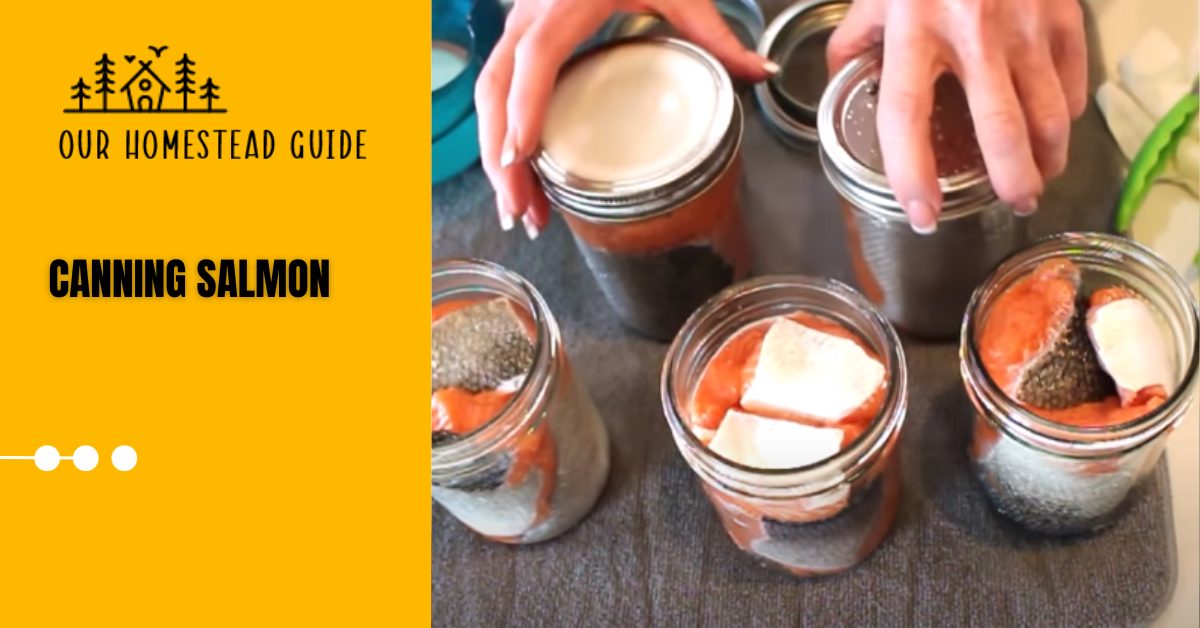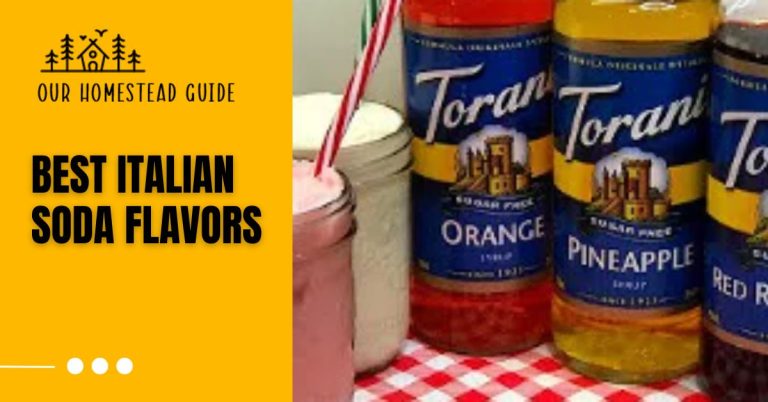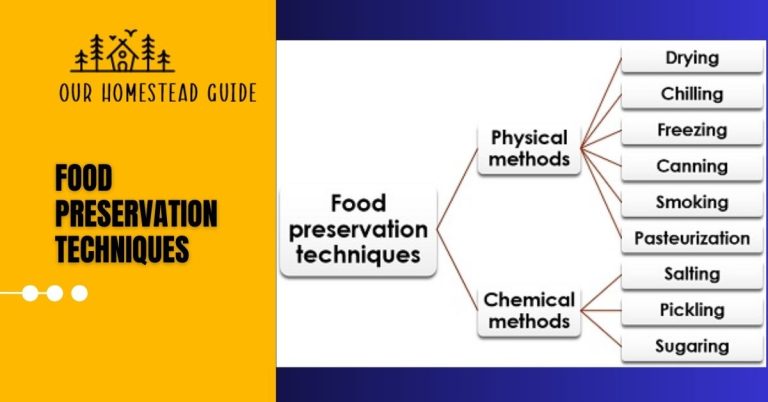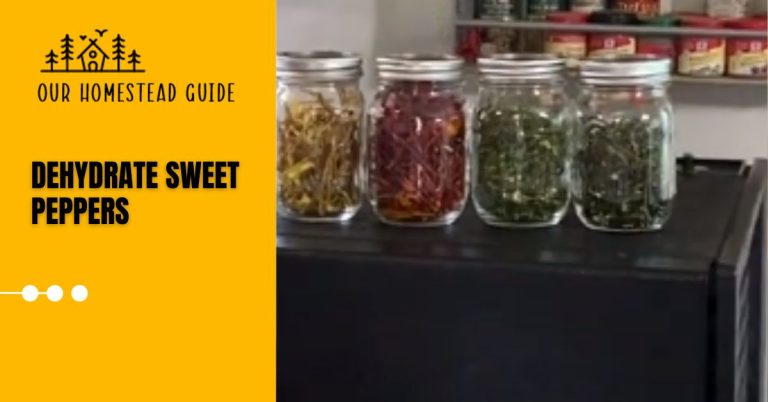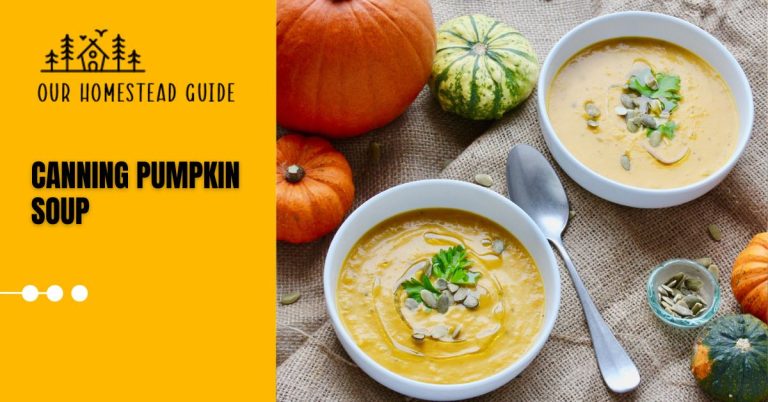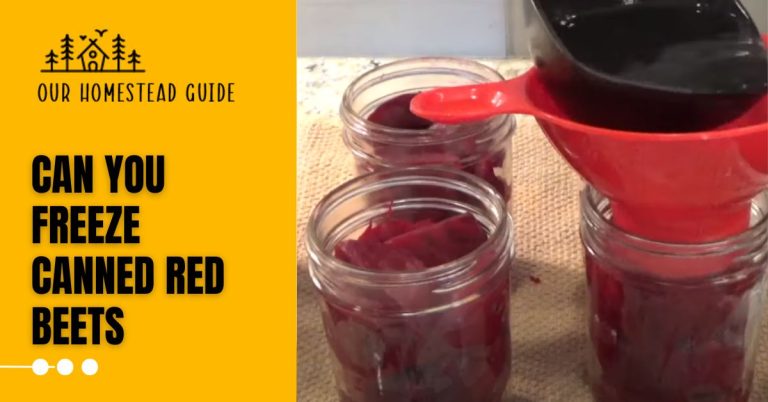Safely Pressure Canning Salmon: Easy Steps Guide
Canning salmon is a popular method of preserving this nutritious and flavorful fish for longer-term storage. Salmon canning provides a range of methods and tools to choose from. To can efficiently, make sure your instant pot is clean, prepare your deboned salmon pieces, and put them into pint or quart jars for a simple alternative.
How to canning salmon?
Step 1: Gather Your Supplies
| Supplies | Quantity/Size |
| Salmon | Approximately 10 pounds |
| Pressure canner | |
| Canning jars (pints) | |
| Canning lids and rings | |
| Cutting board | |
| Vinegar | |
| Hydrogen peroxide | |
| Towels and paper towels | |
| Jar lifter | |
| Timer | |
| Wooden spoon or plastic utensil for packing |
Step 2: Prepare and Thaw the Salmon
Remove the salmon from the freezer and give it time to defrost. It’s acceptable if it’s still half frozen. Take out any salmon bones that are visible. Keep in mind that bones won’t remain in the final product because they will dissolve during the canning process.
Step 3: Get the canning jars ready
- Warm, soapy water should be used to clean the canning jars, lids, and rings.
- Check the jars for chips or cracks, and throw away any that are broken.
- You may sanitize the jars by either putting them in the dishwasher or boiling them for ten minutes.
- To guarantee a clean seal, wipe the jar rims with a cloth dipped in vinegar while the jars are still warm.
Step 4: Fill jars with salmon.
- Chop the fish when it has thawed.
- Salmon should be added to the prepared jars, allowing about 1 inch of headspace above the seal.
- Just like you would with other canned meats, firmly pack and press the salmon into the jars.
Step 5: Inserting the Lid and Ring
Put the ready-made lids onto the jars and tighten the rings until they are snug enough to fit a finger. Do not over-tighten. Make sure there is no oil or dirt on the jar rims by giving them another wipe with a cloth soaked in vinegar.
Step 6: Get the Canner Ready
Cold water should be added to the pressure canner. Make sure the filled jars are not in contact with one another when you place them into the canner.
Step 7: Process of Canning
- While the salmon is still cold, preheat the canner but do not use boiling water.
- Allow the canner to vent for ten minutes after sealing and releasing steam.
- Once you have vented, shut off the vent and begin the pressure canning procedure. Process for 100 minutes if you are making pint-sized fish jars.
- To keep the pressure at the optimal level for your altitude, adjust the heat.
Step 8: Chill and Keep
- Once the processing period is over, switch off the heat and allow the canner to naturally depressurize.
- Give the jars five to ten more minutes to settle in the canner.
- Using a jar lifter, carefully remove the jars and set them on a surface covered with towels.
- Allow the jars to cool fully. You’ll hear the lids “ping” when they seal as they cool.
- Once the jars have cooled, use a pressure gauge to ensure that each one has been sealed; the lid should not come back.
- Put a label on the sealed jars and keep them somewhere dry, dark, and cool.
Canning Salmon Pressure Cooker
When canning salmon in a pressure canner, the fish must be cooked, packed, and preserved in jars. Once the salmon has cooked all the way through, fill the jars to the necessary headspace and seal them with salt. Wipe the rims of the jars, remove air bubbles, and screw on the lids.
Process in the pressure canner for the designated amount of time and pressure, then let cool naturally. For safety, follow tried and verified recipes and check the seals before storing the jars in a cold, dark area.
Canning Salmon Without Pressure Cooker
When canning salmon without a pressure cooker, the fish must be cooked all the way through, then packed into sterilized jars with salt and heated in a boiling water bath. Once air bubbles are removed, jar rims are cleaned, and lids are tightened, the jars are placed in boiling water for the prescribed amount of time.
Sealed jars are examined and kept in a cold, dark area once they have cooled. To guarantee adequate preservation when canning salmon without a pressure cooker, it is imperative to adhere to authorized recipes and safety rules.
Water Bath Canning Salmon
Salmon is canned using a process called water bath canning, which involves boiling the fish until it’s completely cooked, and then putting it into jars that have been sanitized and salted.
Following the removal of air bubbles, jar rim cleaning, and lid sealing, the jars are processed in boiling water for the designated amount of time. The sealed jars are examined after cooling and kept in a dark, cold place. When preserving salmon by water bath canning, it is essential to follow reliable recipes and safety precautions.
Short Canned Salmon Recipes:
Salmon Rice Bowl:
Create a tasty and nutritious rice bowl with canned salmon, mixed veggies, and your favorite seasonings. Quick, easy, and perfect for a satisfying meal.
Creamy Salmon Alfredo:
Elevate your pasta game with this luscious canned salmon alfredo. A delightful blend of creamy sauce and salmon that’s sure to impress.
Avocado Salmon Salad:
Enjoy a refreshing twist with this avocado and canned salmon salad. A healthy and flavorful option for a light lunch or dinner.
Zesty Salmon Burgers:
Whip up delicious salmon burgers using canned salmon, breadcrumbs, and zesty spices. Great for a fun family meal.
Canned Salmon Casserole:
Create a comforting and hearty casserole with canned salmon, potatoes, and a rich creamy sauce. Perfect for a cozy dinner on cooler nights.
Table of Variations:
| Recipe Name | Key Ingredients | Features |
| Salmon Rice Bowl | Canned salmon, mixed veggies, seasonings | A rich and indulgent pasta dish |
| Creamy Salmon Alfredo | Canned salmon, pasta, creamy alfredo sauce | A refreshing and nutritious salad |
| Avocado Salmon Salad | Canned salmon, avocado, fresh greens | Refreshing and nutritious salad |
| Zesty Salmon Burgers | Canned salmon, breadcrumbs, spices | Fun and flavorful burger option |
| Canned Salmon Casserole | Canned salmon, potatoes, creamy sauce | Comforting and hearty casserole option |
Note: These recipes are just a starting point, and you can get creative with additional ingredients and seasonings to customize each dish to your taste. Enjoy experimenting with these canned salmon recipes!
General Salmon Canning and Information:
- Cooperative Extension programs are involved in educating and providing information about canning salmon.
- Canning salmon is a prevalent activity in Alaska, likely due to the abundance of wild salmon in the region.
- Washington also has a connection to canning salmon, possibly due to its coastal proximity and fishing industry.
- Home canning of salmon is a common practice among enthusiasts and those looking to preserve their catch.
- Canned salmon can be used in various recipes, including rice dishes, pasta meals, and mashed potato pies.
- Canned salmon is available at Aldi, a popular grocery store chain.
- Canned salmon can be used as an ingredient in pasta dishes.
- It can also be incorporated into mashed potato pies, adding a twist to traditional recipes.
- Some canning enthusiasts may prefer to preserve smoked salmon strips.
- Vinegar is used in the canning process of salmon, likely as part of a brine or pickling solution.
- Canned salmon is considered good for human consumption, being a source of nutrition and protein.
- It can also be a suitable addition to a dog’s diet, providing them with essential nutrients.
- Concerns about mercury levels in canned salmon have been raised, and consumers may seek information about safe consumption.
- Canned salmon is a rich source of omega-3 fatty acids, which are beneficial for heart health and other functions.
- The comparison between canned salmon and fresh salmon highlights the convenience and availability of canned options.
- Similarly, there may be a comparison between canned salmon and canned tuna for various recipes.
- Canning wild salmon allows individuals to preserve and enjoy the flavors of wild-caught fish.
Questions and Topics about Canning Salmon:
Preserving Washington’s Salmon Legacy: Explore how canning salmon plays a vital role in connecting the state of Washington to global markets, allowing its renowned salmon industry to share its delicacies worldwide.
Enhancing Flavor with Creative Additions: Discover various ingredients you can add to salmon when canning, such as herbs, spices, and citrus, to elevate the taste and create unique flavor profiles.
Mastering the Art of Canning Salmon: Learn expert tips on what to add to salmon when canning it, from brines to marinades, ensuring your canned salmon is flavorful and delightful.
The Role of Vinegar in Canning Salmon: Understand the significance of adding vinegar during the canning process and how it contributes to preserving salmon and enhancing its taste.
Preserving Omega-3 in Canned Salmon: Uncover the truth about omega-3 fatty acids in canned salmon, including how canning impacts these essential nutrients.
Perfecting Smoked Salmon for Canning: Get pro tips on smoking salmon before canning, including ideal smoking times and techniques for achieving mouthwatering results.
Optimal Smoking Times for Canning: Find out how long you should smoke salmon before canning to strike the perfect balance of flavor and texture.
Achieving Best Results: Smoking Salmon for Canning: Discover the recommended duration for smoking salmon to ensure it complements the canning process and maintains its taste.
Preparing Salmon for Canning with Precision: Learn the proper techniques for cutting salmon to fit into canning jars efficiently, avoiding wastage and ensuring consistent results.
Canning Salmon Safely: Understand the recommended time frames for canning salmon to ensure food safety and preserve its quality.
Pressure Canning Salmon Made Easy: Explore step-by-step instructions on how to pressure can salmon effectively, ensuring long-term preservation and flavor.
Mastering the Basics: Canning Salmon 101: Discover essential tips and tricks for canning salmon like a pro, from preparation to sealing the jars.
Prepping Salmon for Canning: Dos and Don’ts: Get valuable insights into preparing salmon for canning, including crucial dos and don’ts to ensure a successful canning process.
Demystifying Canned Salmon Myths: Learn about the facts surrounding canned salmon, from cooking methods to health benefits, debunking common misconceptions.
Salmon Canning Innovations: Canne Sage X and Beyond: Stay updated on the latest advancements in salmon canning technology and explore the future of canning methods like Canne Sage X.
Unlocking the Secrets of Salmon Cuts: Delve into the different types of salmon cuts, understanding which ones are best for canning and other culinary endeavors.
The Rising Trend of Zombie Salmon: Discover the intriguing phenomenon of “zombie salmon” and its impact on the fishing and canning industry.
Most Frequently Asked Questions!
1- What type of salmon is best for canning?
Sockeye, coho, and pink salmon are examples of fatty fish that are frequently used for canning because of their increased oil content, which enhances their flavor and texture.
2- Should I use fresh or frozen salmon for canning?
You may use frozen or fresh fish. Before canning, frozen salmon has to be thawed in the refrigerator.
3- What equipment do I need for canning salmon?
A pressure canner, jar lifters, canning funnels, debubblers, and canning jars with lids and bands are required. To guarantee safety, make sure you follow the right canning processes.
4- Do I need to cook the salmon before canning?
Yes, before canning, the fish needs to be well-boiled. You may do this by poaching, broiling, or baking the fish.
5- Can I add seasonings or spices to the canned salmon?
Yes, you may improve the flavor by adding condiments or spices. Herbs, lemon juice, salt, and pepper are typical additions. To guarantee the right acidity levels for safe canning, stick to a tried-and-true formula.
6- How long does canned salmon last?
Salmon that has been canned and kept in a cold, dark area will be kept for at least a year. Prior to consumption, always look for spoilage indicators.
7- Can I use an open-kettle canning method for salmon?
No, canning salmon in an open kettle is not a recommended method. Salmon’s low acidity necessitates the use of a pressure canner to guarantee the destruction of dangerous microorganisms like Clostridium botulinum.
8- What are the safety precautions for canning salmon?
Make sure your pressure canner is in good working order, utilize tried-and-true recipes, and adhere to the correct canning processes. To reduce the danger of foodborne infections, be aware of the recommended processing periods and pressures for canning salmon.
9- Can I have smoked salmon?
Canning smoked salmon at home is not advised. The fish’s pH is changes during the smoking process, and canning cannot completely eradicate dangerous microorganisms. Remain with fully cooked fish canned using recognized techniques.
10- Can I reuse canning lids?
No, reusing canning lids is not safe. A failing seal may result from deterioration of the sealing material on the lid. New lids should be used for every canning process.
you may also like this article.

